Sơ đồ quy trình cơ bản so với sơ đồ quy trình chức năng chéo
Các quy trình có thể được biểu diễn bằng sơ đồ quy trình, nhưng chúng có một nhược điểm – một sơ đồ quy trình tiêu chuẩn không thể chỉ ra ai là người chịu trách nhiệm cho các hoạt động. Các quy trình có thể được biểu diễn bằng sơ đồ quy trình, nhưng chúng có một nhược điểm – một sơ đồ quy trình tiêu chuẩn không thể chỉ ra ai là người chịu trách nhiệm cho các hoạt động.
Vì vậy, Sơ đồ quy trình chức năng chéos (hay còn được gọi là sơ đồ làn bơi, sơ đồ quy trình làn bơi, sơ đồ quy trình chức năng chéo) mang lại sự rõ ràng cho các quy trình bằng cách xác định ai làm gì. Mỗi làn bơi đại diện cho một người, một nhóm hoặc một bên liên quan, làm cho rõ ràng ai là người chịu trách nhiệm cho giai đoạn nào trong quy trình để giúp tránh nhầm lẫn.
Sơ đồ quy trình chức năng chéo là gì?
Như đã đề cập ở trên, sơ đồ quy trình mô tả các bước của một quy trình, và khi quy trình liên quan đến nhiều người, phòng ban hoặc lĩnh vực chức năng khác nhau, có thể khó khăn để theo dõi ai là người chịu trách nhiệm cho từng bước.
Ví dụ, nếu bạn đến bệnh viện, bạn cần đến quầy dịch vụ để lấy một vé nhỏ cho một phòng ban cụ thể, sau đó đến cửa sổ đăng ký để đưa vé nhỏ cho nhân viên, trả phí đăng ký và nhận mẫu đăng ký, sau đó đến phòng ban cụ thể để gặp bác sĩ.
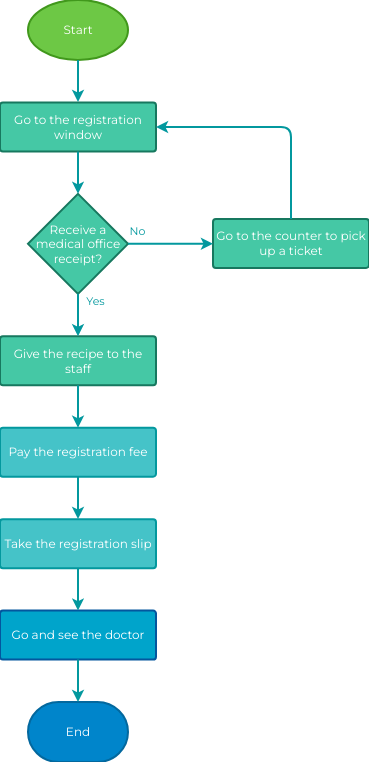
Chỉnh sửa mẫu sơ đồ quy trình này
Trong ví dụ trên, chúng ta có thể thấy rằng mỗi văn phòng sẽ có quy trình riêng của mình, theo quy trình để đạt được mục đích nhanh chóng và giảm bớt rắc rối không cần thiết, nhưng tất nhiên bạn cũng có thể tìm thấy một cách độc đáo, thuộc về việc tối ưu hóa quy trình.
Một cách hữu ích để giải quyết vấn đề này là chia sơ đồ quy trình thành các cột để bạn cũng có thể có cái nhìn rõ ràng về số lượng chuyển giao nhiệm vụ. Ở đầu mỗi cột, viết tên của người hoặc phòng ban chịu trách nhiệm cho quy trình trong cột đó. Mỗi khi một hành động được thực hiện, nó sẽ được mô tả trong cột này.
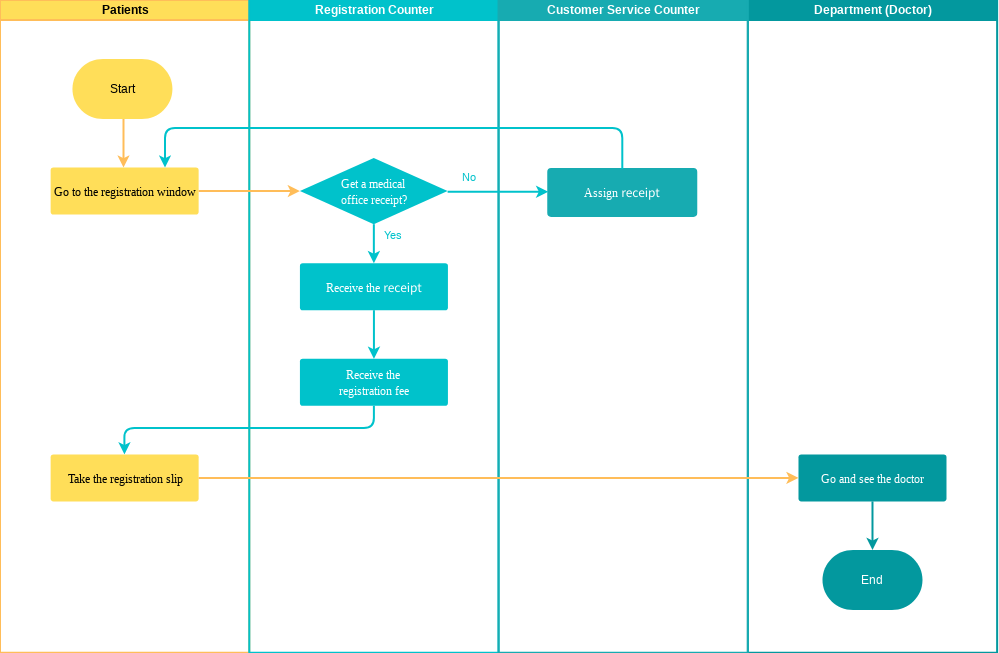
Chỉnh sửa mẫu sơ đồ quy trình chức năng chéo này
Nhiều ví dụ về sơ đồ quy trình chức năng chéo hơn
VP OnlineCông cụ lập bản đồ quy trình mạnh mẽ của ‘ hỗ trợ nhiều sơ đồ lập bản đồ quy trình. Bạn có thể sử dụng sơ đồ quy trình chức năng chéo để thể hiện mối quan hệ giữa một quy trình kinh doanh và các đơn vị chức năng chịu trách nhiệm cho quy trình đó. Công cụ sơ đồ quy trình chức năng chéo đi kèm với một bộ biểu tượng và tính năng phong phú giúp bạn tạo ra các sơ đồ quy trình chuyên nghiệp trong thời gian ngắn. Ngoài ra, bạn có thể truy cập các sơ đồ quy trình của mình từ bất kỳ đâu vì VP Online hoàn toàn dựa trên đám mây.
VP Online cung cấp một bộ sưu tập phong phú các mẫu sơ đồ quy trình chức năng chéo cho phép bạn bắt đầu nhanh chóng. Dưới đây là một vài mẫu. Nhấp vào một mẫu để xem, hoặc nhấp vào Chỉnh sửa để bắt đầu chỉnh sửa – không cần đăng ký trước. Nhiều mẫu khác có thể được tìm thấy trong công cụ tạo sơ đồ quy trình chức năng chéo.
Mẫu sơ đồ quy trình chức năng chéo (Làn bơi dọc)
Đây là một sơ đồ làn bơi đơn giản phân loại một số quy trình thành ba nhóm dọc và bốn nhóm ngang. Tạo sơ đồ làn bơi của bạn bằng cách sử dụng mẫu này làm điểm khởi đầu. Tùy chỉnh sơ đồ cho giải pháp của bạn. Không cần đăng ký trước.
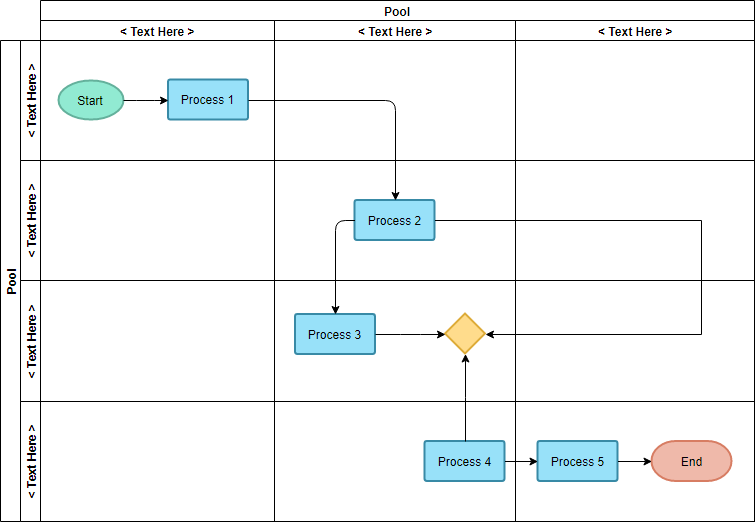
Mẫu sơ đồ quy trình chức năng chéo (Kiểu lưới)
Đây là một sơ đồ làn bơi đơn giản phân loại một số quy trình thành bốn nhóm dọc và ba nhóm ngang. Mẫu sơ đồ làn bơi này có thể giúp bạn tạo ra các quy trình trong tổ chức của bạn.
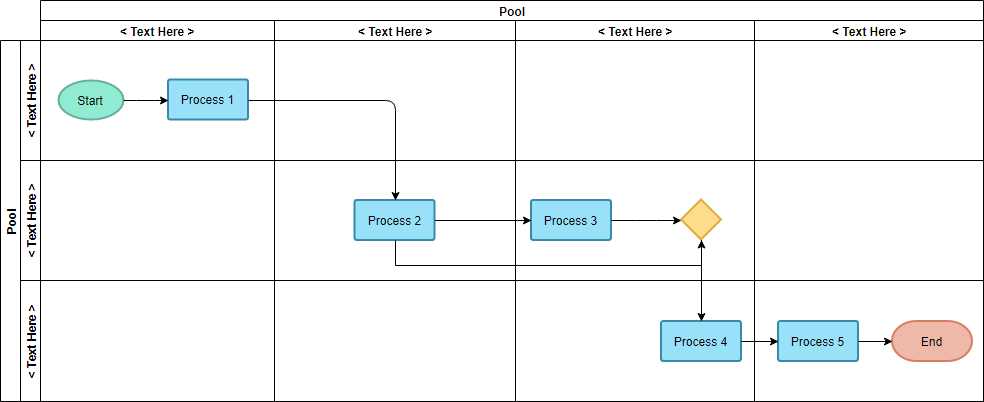
Ví dụ sơ đồ quy trình chức năng chéo (Kiểu lưới) – Phát triển khóa học
Đây là một ví dụ về sơ đồ làn bơi cho thấy toàn bộ quy trình phát triển khóa học. Quy trình được chia thành 4 giai đoạn – Lập kế hoạch, Phát triển, Đánh giá và Xuất bản. Giáo viên, người đánh giá và trợ giảng làm việc cùng nhau để sản xuất một khóa học.
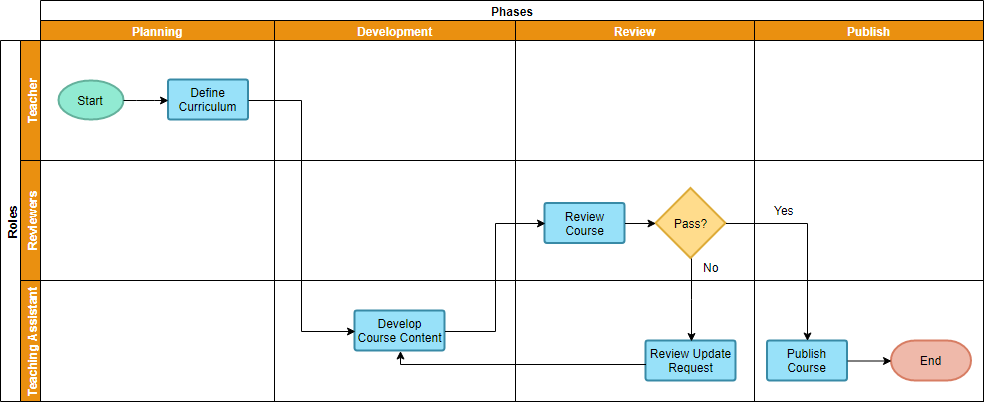
Ví dụ sơ đồ quy trình chức năng chéo – Quy trình trả lương
Sơ đồ quy trình đơn đặt hàng cho thấy quy trình phê duyệt tín dụng của một đơn đặt hàng (PO) từ mẫu đơn tạo đơn hàng, qua việc xem xét và phê duyệt tín dụng bằng cách đi qua ba phòng ban khác nhau (Bán hàng, Phòng tín dụng và Quản lý):
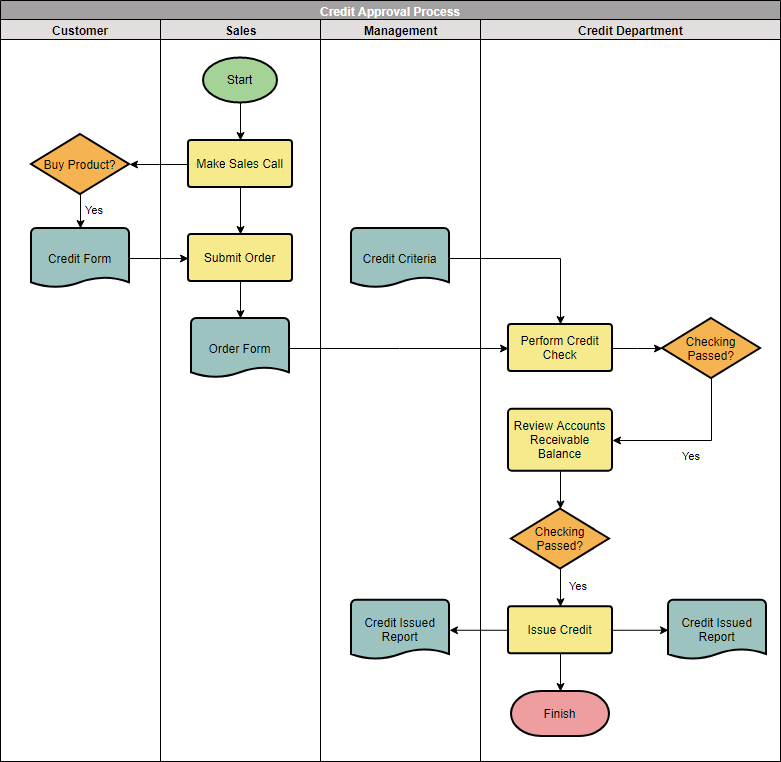
This post is also available in Deutsch, English, Español, فارسی, Français, Bahasa Indonesia, 日本語, Polski, Portuguese, Ру́сский, 简体中文 and 繁體中文.













